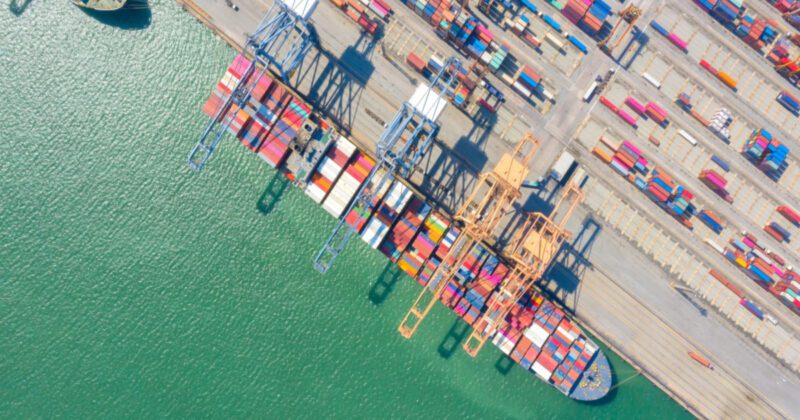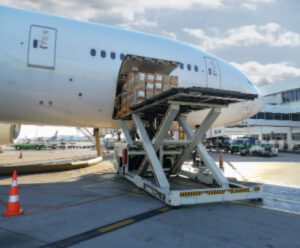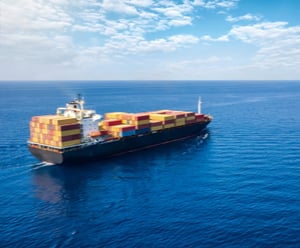
Awaiting the “bull-whip”: all eyes are on post-lockdown demand

Across global freight markets, all eyes are firmly focused on China. For weeks, rolling lockdowns have impeded the flow of exports to key ports. Imports of sub-components to manufacturers from elsewhere in Asia have also been hit due to the lack of trucking options.
That has left the industry trying to measure the un-measurable: how much demand is backed up inside China, and what will be its impact once the lockdowns are eased?
Despite the lockdowns, the port of Shanghai remains operational, and export volumes to Europe have dropped because less cargo is being delivered to the terminals. Thus far, there has been minimal impact on the Asia-Europe front, according to DHL’s June Ocean Freight Market Update.
“But this is only a temporary scenario, and further uncertainty sets in once the lockdowns are lifted,” said Kelvin Leung, CEO, DHL Global Forwarding Asia Pacific.
Leung also noted that there has been an increase in imports that include manufacturing parts and raw materials into China in the past couple of weeks. “This may lead to an increase in exports from China in the next few weeks, which will see ports in Europe and the U.S. getting busier,” he added.
How big is the backlog?
This epicenter of this uncertainty is Shanghai, the world’s largest container port. Its shutdown has had a severe impact, both on its population and on world trade. Take port data, for example. China’s Transport Ministry claims that of the country’s leading container ports, only Shanghai saw a month-on-month decline in April, the first full month of a city-wide lockdown that led to the closure of factories and the suspension of most trucking services.
Transport Ministry figures show month-on-month volumes at Shanghai falling 19 percent, from 3.8 million TEU in March to 3.1 million TEU in April. By contrast, other leading container hubs, including Ningbo-Zhoushan, Shenzhen, Guangzhou, and Qingdao, all saw substantial double-digit month-on-month percentage increases. Container volumes at eight of China’s top ports rose 25 percent to 16.8 million TEU in April from 13.4 million TEU in March, according to the Journal of Commerce.
However, while the volume figures look relatively unscathed by lockdowns, the Purchasing Managers Index (PMI) and export growth forecasts are far more pessimistic about the impact lockdowns have had on trade. The May PMI of 49.6 is the third consecutive contraction since the February PMI of 50.2.
Key to everything is trying to estimate how much is still in China awaiting shipment. If only part of the 700,000 TEU deficit at Shanghai in April is backed up and ready for shipment (the rest having been shipped out of alternative ports such as Ningbo), that remains a substantial surge of cargo set to be uncorked if the city finally reopens after numerous previous false dawns.
Shanghai surprise
For its part, maritime research firm Drewry estimates that 260,000 TEU of Shanghai’s export cargo built up in April alone and is now ready for shipment. That is the equivalent of 26 fully loaded 10,000 TEU container ships.
The release of this volume, says the analyst, will make the peak season “even more chaotic”, adding more heat to global supply chains “already severely stressed and facing reduced capacity due to pervasive congestion”.
Drewry added: “The greatest uncertainty is when China’s lockdown restrictions will end, and the ‘bullwhip’ impact this will have across the supply chain. Liner shipping schedules will also take at least one rotation to normalize. This would mean that, even if lockdowns were to end today, the predictability and capacity of the container distribution system would be jeopardised during summer peak season.”
The jury is out
But not everyone agrees. Peter Sand, Xeneta chief analyst, believes some of the forecasts that a flood of cargo will soon be departing Shanghai and other Chinese ports are overstated.
“I have consistently put my money on very little pent-up demand in Shanghai,” he said.
Sand added that even though some container shipping indices had edged up in the final week of May, Xeneta had recorded that spot freight rates were still in retreat. He does not expect the opening up of Shanghai to have more than a limited impact on East-West trade lane spot freight rates.
He is also pessimistic about demand. “The markets have turned a corner. As demand weakens, and shippers prepare for disruptions such US West Coast dockworker negotiations well in advance, this downward trend continues,” he added.
Port uncertainty
While the focus largely remains on Shanghai, there are other issues. Another factor causing uncertainty in freight markets is delays and congestion at ports in northern Europe. According to DHL’s June Ocean Freight Market Update, container ships deployed on the Asia-North Europe trade currently need an average of 101 days to complete a full round voyage. This means they arrive on average 20 days late in China for their next round trip, forcing carriers to blank some sailings as there are no vessels available. The delays have further increased during recent months.
“The time needed to discharge at leading European ports remains high even though volumes out of China to Europe have fallen,” said Dominique von Orelli, Global Head, Ocean Freight, DHL Global Forwarding.
This is caused by a combination of factors including inland bottlenecks, and a lack of port and trucking labor. “It is likely congestion in Europe will worsen if exports from China do indeed strengthen in the weeks ahead. Considering these factors, advanced booking is more important than ever to counter the potential rebound from cargo backlog in China,” cautioned von Orelli.
ALSO WORTH READING














 English
English